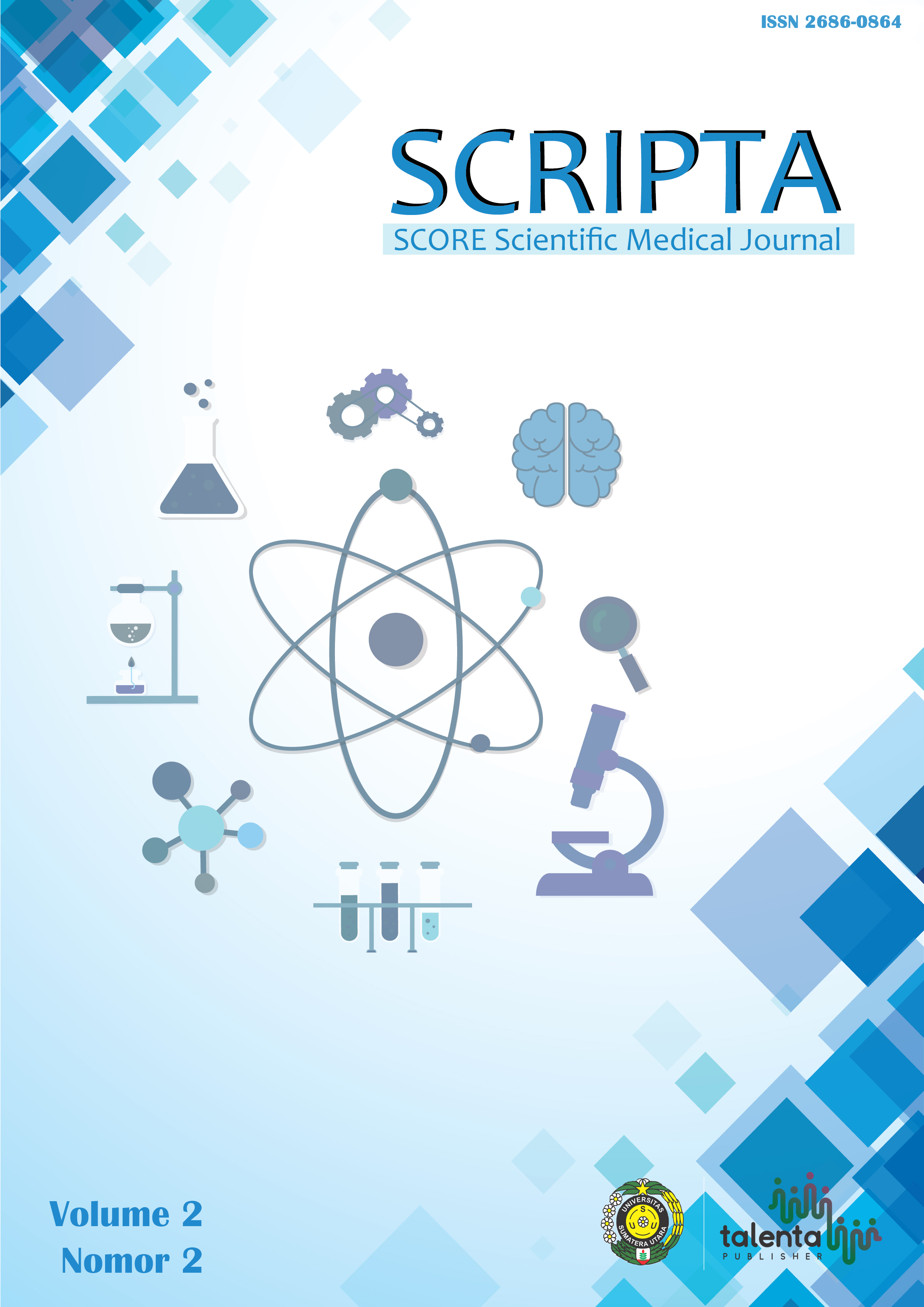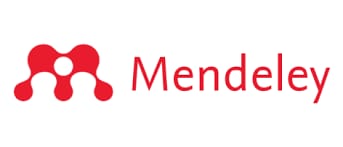1-hydroxymethyl Harmine-TGFβSF Inhibitor: Inovasi Terapi Diabetes Melitus Terbaru Melalui Inisiasi Proses Regenerasi Sel β Pankreas pada Penderita DM Tipe 1 dan 2
DOI:
https://doi.org/10.32734/scripta.v2i2.3926Keywords:
diabetes mellitus, harmine, TGFβSF inhibitor, β cell proliferation, proliferasi sel βAbstract
Background: Type 1 and 2 diabetes mellitus (DM) is a chronic metabolic disease most commonly affects millions of people worldwide. Despite the differences in pathogenesis, both share one thing in common - that is the drastic depletion in the number of pancreatic β cells. Unfortunately, physiological proliferation of β cells has come to a halt starting from the first year of neonatal. To overcome this problem, researchers have been searching for molecules with the ability to induce β cells proliferation. Upon extensive screening, only harmine was proven to be the most potent β cells proliferation inducer. Furthermore, combination of harmine with TGFβSF inhibitor was found to boost harmine’s effectivity even more. Another development was also made to improve harmine’s selectivity by incorporating 1-hydroxymethyl group.
Objective: Evaluate the potency of 1-hydroxymethyl harmine-TGFβSF inhibitor as a novel therapy for DM.
Method: A systematic literature study was conducted with the database from Pubmed, Google Scholar, ScienceDirect, and Proquest for articles published within 2015-2019.
Discussion: This literature review yields result that harmine-TGFβSF inhibitor is proven to induce β cells proliferation up to 18%/day or equal to 18 times the normal cell proliferation rate during embryogenesis. Moreover, incorporating 1-hydroxymethyl group into harmine is proven not only to improve selectivity but also lessen the toxicity, making 1-hydroxymethyl harmine safe as a novel therapy for diabetes.
Conclusion: 1-hydroxymethyl harmine-TGFβSF inhibitor display promising potential as a novel therapy for all type of diabetes patients.
Keywords: diabetes mellitus, harmine, TGFβSF inhibitor, β cell proliferation
Â
Latar Belakang: Diabetes Melitus (DM) tipe 1 maupun tipe 2 merupakan penyakit metabolik kronis yang paling banyak ditemukan di seluruh dunia. Walaupun memiliki proses patogenesis yang berbeda, namun kedua tipe DM ini ternyata memiliki kesamaan, yaitu terjadinya penurunan kuantitas sel β pankreas. Sayangnya, kemampuan regenerasi sel β pankreas manusia telah terhenti semenjak tahun pertama masa neonatal. Untuk menangani permasalahan tersebut, para peneliti menemukan sebuah molekul bernama harmine yang terbukti efektif menginisiasi proses regenerasi sel β pankreas. Selanjutnya, untuk meningkatkan efektifitas dari harmine agar lebih baik lagi, peneliti kemudian mengkombinasikan harmine dengan TGFβSF inhibitor. Sedangkan, untuk meningkatkan selektivitas dari harmine, peneliti menambahkan gugus 1-hidroksimetil pada molekul tersebut.
Tujuan: Evaluasi potensi 1-hydroxymethyl harmine-TGFβSF inhibitor sebagai terapi utama bagi semua penderita DM.
Metode: Penelitian dilakukan dengan melakukan tinjauan pustaka dari beberapa database jurnal, yakni PubMed, Google Scholar, ScienceDirect dan ProQuest dengan kriteria literatur dipublikasikan dalam kurun waktu 2015-2019.
Pembahasan: Studi literatur ini menunjukan bahwa harmine-TGFβSF inhibitor telah terbukti mampu meningkatkan proliferasi sel β pankreas manusia hingga mencapai 18%/hari atau setara dengan 18 kali kecepatan embriogenesis pada sel normal. Selain itu, penambahan gugus 1-hidroksimetil pada harmine juga telah terbukti tidak hanya mampu meningkatkan selektivitas dari molekul tersebut, tetapi juga mampu menurunkan efek toksisitasnya, sehingga aman digunakan sebagai terapi anti-diabetes terbaru.
Kesimpulan: 1-hydroxymethyl harmine-TGFβSF inhibitor memiliki potensi yang menjanjikan untuk menjadi terapi baru bagi semua tipe penderita DM.
Kata Kunci: diabetes mellitus, harmine, proliferasi sel β, TGFβSF inhibitor
Downloads
Downloads
Published
How to Cite
Issue
Section
License
Copyright (c) 2021 Ghea Mangkuliguna, Glenardi, Rexel Kuatama

This work is licensed under a Creative Commons Attribution-ShareAlike 4.0 International License.
Authors who publish with SCRIPTA SCORE Scientific Medical Journal agree to the following terms:
- Authors retain copyright and grant SCRIPTA SCORE Scientific Medical Journal right of first publication with the work simultaneously licensed under a Creative Commons Attribution-NonCommercial License that allows others to remix, adapt, build upon the work non-commercially with an acknowledgment of the work’s authorship and initial publication in SCRIPTA SCORE Scientific Medical Journal.
- Authors are permitted to copy and redistribute the journal's published version of the work non-commercially (e.g., post it to an institutional repository or publish it in a book), with an acknowledgment of its initial publication in SCRIPTA SCORE Scientific Medical Journal.














